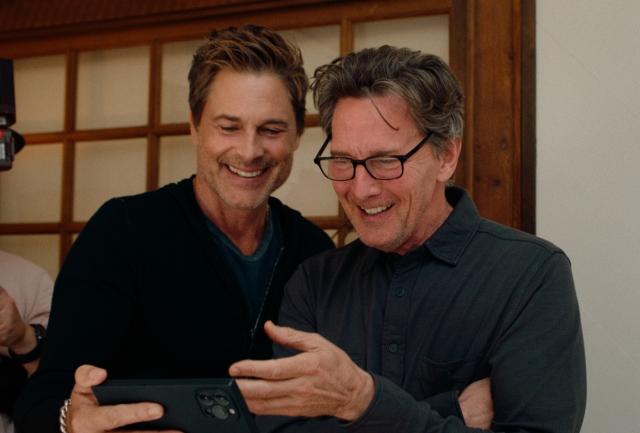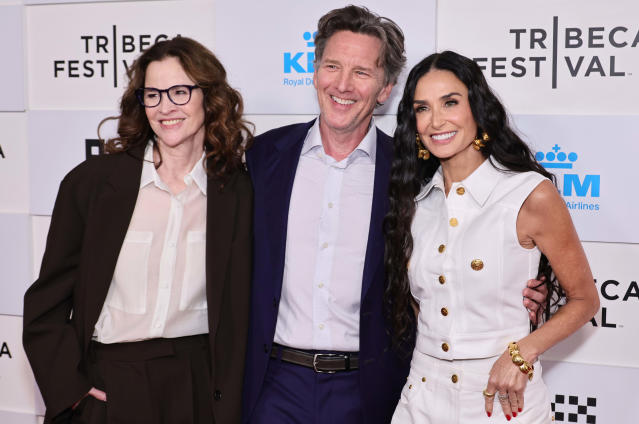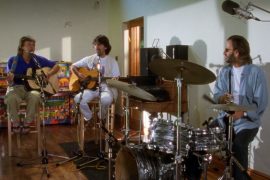
Several recent pop culture documentaries have dug deep into the age-old boomer gold mine. There was yet another study of The Beach Boys as well as Jim Henson’s legacy with the Muppets. Steve Martin was shown to be not always such a wild and crazy guy. Even the original Beatles’ doc “Let it Be” has been exhumed and remastered.
Gen Xers finally got their own nostalgia-palooza with Brats, currently streaming on Hulu and, in Canada, on Disney+. The film is directed by Andrew McCarthy, a member of the “Brat Pack,” a term coined by reporter David Blum in a 1985 article in New York magazine.
“This is the Hollywood ‘Brat Pack.’” Blum wrote after describing the hot young male stars of the day. He came up with the phrase after hanging with and observing several of them at a night out in a trendy LA bar. “It is to the 1980s what the Rat Pack was to the 1960s,” wrote Blum, “a roving band of famous young stars on the prowl for parties, women, and a good time.”
Blum was describing Rob Lowe, Emilio Estevez, Tom Cruise, Sean Penn, Timothy Hutton, Matt Dillon, Judd Nelson and Andrew McCarthy, among others, all under 25 at the time. Separately and together, they had found success in a string of coming-of-age movies set in high school and shortly thereafter, including “The Breakfast Club,” “St. Elmo’s Fire,” “The Outsiders,” “Risky Business,” and others.

Among the directors many of them worked with in the early ’80s was John Hughes, who would go on to explore similar themes with “Sixteen Candles” and “Pretty in Pink.”
Barely mentioned in the 1985 article are the female stars of the movies most associated with this Brat Pack — Demi Moore, Molly Ringwald, Ally Sheedy and Lea Thompson. Instead, Blum focuses on the young men, dismissing some (he calls Nelson “The Overrated One”) and zeroing in on the one he sees as the “President” of the Pack, Estevez.
advertisement
The article, we learn, stung the group. They resented being characterized as self-absorbed and privileged young fun-seekers who “save their praise for themselves.” The guy who simply can’t let go of his resentment is McCarthy, and he is the driving force behind this nostalgic road trip back to high school reunion hell. The doc, therefore, finds McCarthy, joined by a cameraperson or two, road-tripping it back to Hollywood to see how many of the Brat Pack-ers he can reunite with on camera to see if they can find some closure to this festering wound.

Now, a lot of us might say, dude, you had a wide-open window to a crazy-level of movie star fame, shut the hell up and work all this out with your therapist and accountants. McCarthy, in particular, always seemed like he was, well, the type of character he often portrayed — a child of privilege. If the term “Brat” stung so deep, step aside, thousands of others might have happily worn that T-shirt.
If you grew up watching these actors, however, there is a fascination to follow McCarthy on this therapedic journey. The Brat Pack-ers really were the proto-types for the actors who later became the six stars of Friends. Viewers their age wanted to know both groups and be them. When the actual actors take stock and look back, was it as cool as it seemed to many mere outsiders?
The other reason to watch is to see if McCarthy can get back with the entire band. He does not, and the one key no-show is Ringwald. She’s mentioned once or twice, but her perspective would have been very interesting, especially considering the fact that Hughes seemed to see her as his muse.
It is still fun, however, to see how Estevez reacts to McCarthy showing up at his house. The two stand in the “Mighty Ducks” stars’ very rustic kitchen/bar area and talk through what they saw as the damaging results of the New York magazine article. Both feel it hurt their careers more than it helped, taking them out of the running for more adult and more serious roles. Not all of them, mind you. Cruise seemed to thrive, and Lowe, who seems unstung by the association, didn’t do too badly either. McCarthy, Estevez and Nelson, however, may have had a case.
Demi Moore has evidently given this all some thought. Her meeting with McCarthy reveals a clarity and insight that cuts through a lot of heartache and consequences. She is brutally honest about her own self and nudges McCarthy to take a similar hard look at himself.
The best part of the film for me, however, was McCarthy’s confrontation with Blum. Credit the writer with having the balls to defend his New York magazine thesis nearly 40 years later to McCarthy’s face. Blum, a bit older than the Pack-ers (he would have been 29, for example, when Estevez was 23), is unrepentant and stands behind what he wrote. On camera in the doc he comes across as perhaps a tad jealous and lacking in empathy.
Now, I’ve been in Blum’s shoes. Back when I covered television for The Toronto Sun, or even further back at TV Guide, there were situations when it was tempting to be dismissive or a little too clever. I like to think, looking back, that I was always mindful that words count and careers are precarious and writers have a responsibility always to be fair. I know I pulled my share of punches, but there were a few jabs that in retrospect shouldn’t have snuck through.
The Sun, for example, was Toronto’s scrappy “little paper that could” and to punch above your weight was, if not manditory, at least an expectation. A little cheek could earn a reward.
At New York Magazine in the mid-’80s, there would have been a much higher bar in terms of editorial expectations when it came to punchiness and edge. Blum, like the kids from “The Breakfast Club,” was out to find his voice and make his name. If you go back and read his original article, the one that provoked McCarthy to make this film, you may come to the same conclusion I did: aside from a few harsh put downs (see “The Overated one”), it is a well-reported account of the time and place and the beautiful young (and very white) people at the centre of the pop world at the time. I’d stand by that byline today as well if it was mine.
Still, I liked “Brats,” because McCarthy saw an opportunity to take stock and did something about it. He did not tamp down his feelings, but instead was brave enough to share them with his former friends and stir the ashes of St. Elmo’s fire. Sure, McCarthy was trying to extend his career with this very personal reality show, but he also seems to be genuinely interested in learning from his past and grow past it, and that’s never a bad idea.
JUST SAYIN‘: For a better film called “Brats,” however, see the glorious 1930 Laurel & Hardy short.






